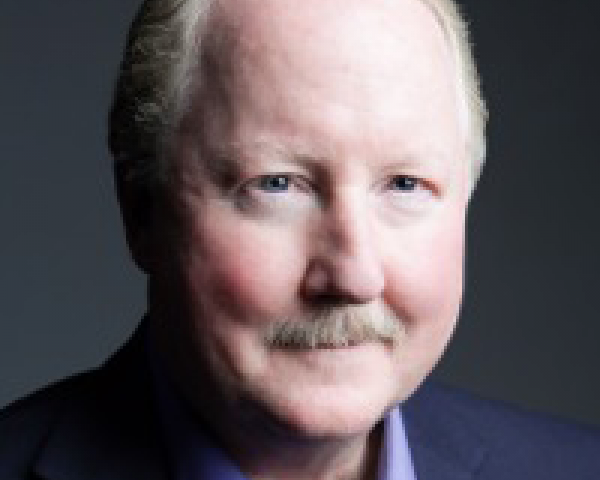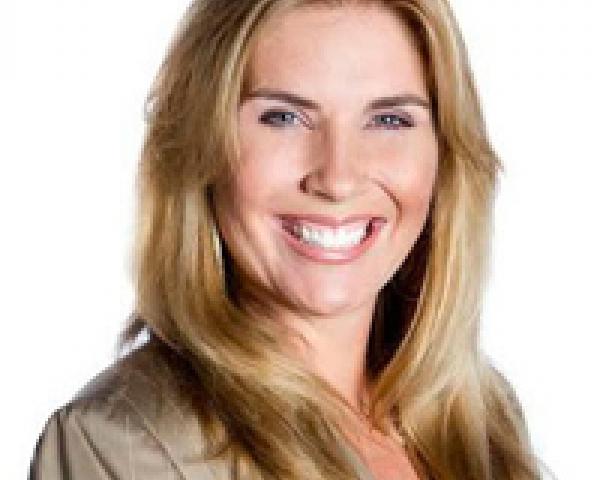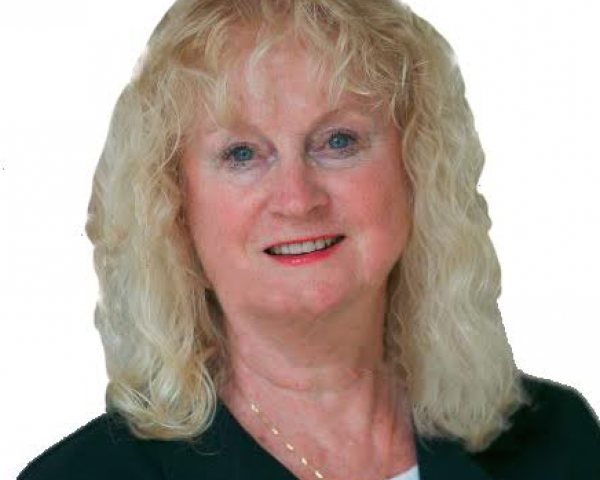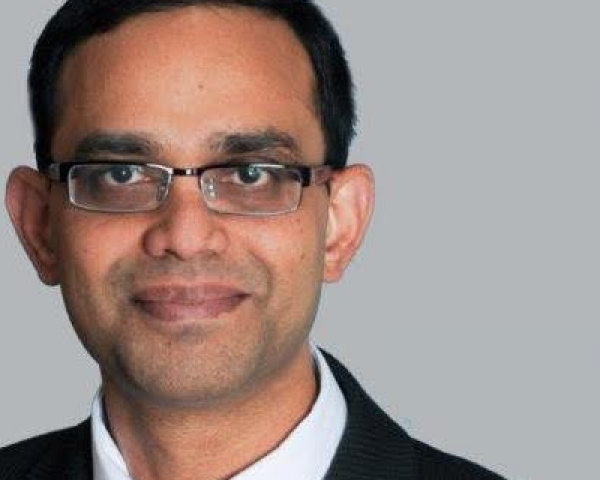The
sharing economy, which is made up of consumers and businesses who provide on-demand services, faces particular challenges when it comes to insuring their risk while conducting business.
Simply put, the sharing economy and the short-term exchange of assets for a fee has created
headaches for insurers. Think of the early days of Uber and ride-sharing insurance.
Certainly, one constant challenge that on-demand or freelance workers face, is purchasing insurance protection at affordable prices.
Since on-demand workers typically work on a per project or per task basis, there may not be a need for annual policies. Especially if there is a gap of more than 30 days between jobs.
In the sharing economy, where ride-sharing has become a tremendous service for on-demand workers, the ability to purchase automobile coverage on
a per-mile basis may very well become a critical need for those who participate in this new industry.
As the sharing economy
continues to expand, the ability to purchase insurance products on a pay-as-you-use basis will become even more important to the members of this new economy.
And, insurance companies will have to respond to the significant insurance implications.
Let's go a little deeper.
Short-Term Insurance: Pay-As-You-Use
Pay-as-you-use is a fairly common economic precept in today’s technology landscape.
It can only become profitable if the consumer realizes a benefit, values its ease of use, and the variable expenses.
An example is when
Metromile introduced its pay-per-mile insurance coverage; it easily appealed to the majority of low-mileage drivers who felt that they would now be treated more equitably.
See also: Insurtech: One More Sign of Renaissance
Ride-share drivers obviously benefited from the reduction in wasted premium dollars, and they were compensated by the delivery of a personalized experience that made them feel counted.
Consumers are responsible for constructing, through their needs and desires, a digitally keen, on-demand sharing economy.
Innovative sharing economy companies like Airbnb, Uber, and WeGoLook, are turning wasted assets and labor into productive and profitable products and services.
The Insurtech Movement
Just as the Italian Renaissance took hold due to the desires and determination of dedicated stakeholders, insurtech as a concept has grown to be a collaborative movement (or Renaissance) in the insurance industry.
Yes, we just compared the Renaissance to insurtech.
The point here is, as with the 14th-century movement, these cultural shifts serve as a bridge from the old to new.
Insurtech, as a technological movement, branched out from fintech following reports of significant capital entering the market for insurance start-ups.
This massive availability of capital paved the way for start-ups and existing companies to innovate new products, services, and fresh new business models.
These models are the innovative driving force supporting the insurtech movement, and why new and existing carriers are considering new business models to jump-start a fairly stale marketplace.
Short-term insurance products are a part of this insurance renaissance.
Denise Garth’s article at Majesco.com sums this all up eloquently;
“Just like the original Renaissance, today's Insurance Renaissance is spurred by the converging factors of people, technology, and market boundaries. InsurTech is powered by all three. Within insurance, this new Renaissance represents a real shift with significant business implications beyond legacy modernization. It represents a whole realm of new opportunities via greenfields, start-ups and incubators to cover a fast changing market landscape.”
The Big 3 Areas of Innovation and Disruption: Short-Term Insurance Implications
The sharing economy is certainly a driving force behind the expected innovation coming out of the insurance industry as companies respond to the needs of the on-demand workforce. Three areas that are most important for short-term insurance innovation are:
People
As baby boomers hand-off to Gen X, and then Gen X hands off to millennials, and the sharing economy continues to grow, expectations must be met regarding pay-per-use-products and changes in communicating resulting from technology.
Technology
Consider for a moment how often consumers use their smartphone daily to research, purchase, and access products and services. The resulting expectations that are seeded by technology continually disrupt the traditional insurance marketplace and means of distribution.
Mobile technology is the linchpin of short-term insurance as it guarantees immediate access and information flow between carriers and policyholders.
Boundaries
Traditional borders matter less and less. Technology and globalization generally simply does not value them.
Consider how car manufacturers like Tesla are
looking to offer the consumer vehicle insurance as a part of the vehicle purchase.
The new business models being formed will drive additional changes in the lives of consumers leading to new expectations and innovation.
With reduced boundaries and increased information, consumers require on-demand products that suit their personal needs. Short term insurance will be a large part of this discussion going forward.
A Bright Horizon
Today's insurers are gazing at the horizon that hasn't been this bright in decades.
Their window of opportunity is wide open for participants to innovate and offer new business models and products to meet the needs of the
pay-as-you-go culture that has developed.
See also: A Renaissance, or Just Upheaval?
Thank you, sharing economy!
Working capital is available for those with the vision, skill-sets, and determination, whether their experience is based on insurance, technology, or other market segments.
Change is on the way, and we'd be wise to get on board lest we get left behind.
Although the growing consumer emphasis is on short term and personalized products, these industry-changing innovations are by no means short term.
They are here to stay!
 Innovation and growth
86% of insurance CEOs believe technology will completely reshape competition in the industry or have a significant impact over the next five years. The gathering transformation is already evident in areas ranging from robo-advice to pay-as-you-go and sensor-based coverage.
See also: Convergence: Insurance in 2017
Cutting-edge customer interaction and data analytics have enabled insurtech businesses to set the pace in the marketplace. However, rather than being just a threat, collaboration with insurtech businesses can help more established insurers to make the leap from incremental to breakthrough innovation. This includes improving insurers’ ability to analyze the huge amounts of data at their disposal, which can lead to better customer understanding, higher win rates and more informed underwriting. Partnership with insurtech can help insurers improve processes, increase efficiencies and reduce costs.
Innovation and growth
86% of insurance CEOs believe technology will completely reshape competition in the industry or have a significant impact over the next five years. The gathering transformation is already evident in areas ranging from robo-advice to pay-as-you-go and sensor-based coverage.
See also: Convergence: Insurance in 2017
Cutting-edge customer interaction and data analytics have enabled insurtech businesses to set the pace in the marketplace. However, rather than being just a threat, collaboration with insurtech businesses can help more established insurers to make the leap from incremental to breakthrough innovation. This includes improving insurers’ ability to analyze the huge amounts of data at their disposal, which can lead to better customer understanding, higher win rates and more informed underwriting. Partnership with insurtech can help insurers improve processes, increase efficiencies and reduce costs.
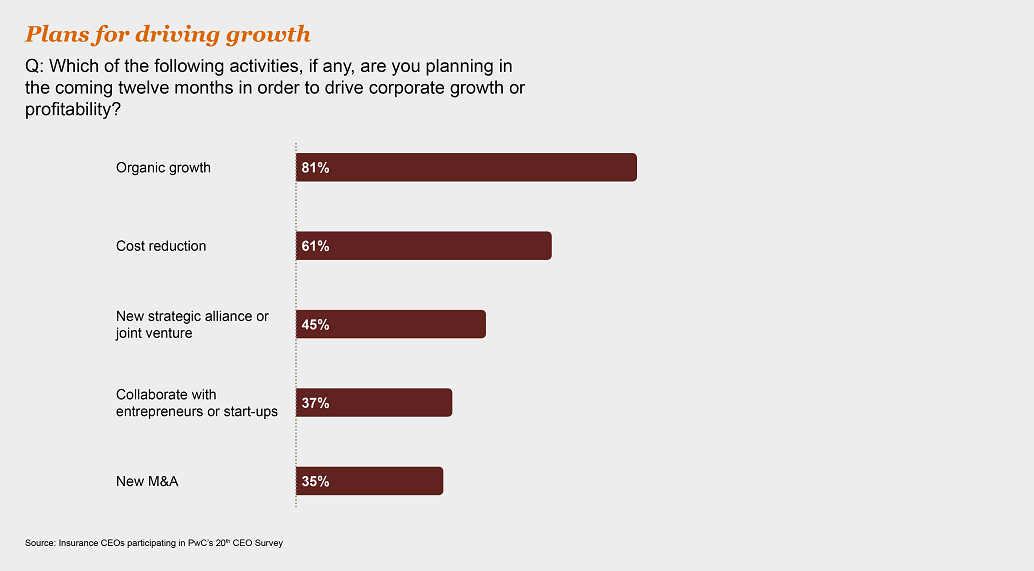 Data, digitization and trust
While digitization and data proliferation are now central elements of the insurance business, they bring increased cyber risk. More than eight out of 10 insurance CEOs (81%) are "somewhat" or "extremely" concerned about the impact on their growth prospects, on a par with banking and capital markets (82%).
Given the volume of medical, financial and other sensitive policyholder information that insurers hold, breaches could lead to a loss of trust that would be extremely difficult to restore. More than seven out of 10 insurance CEOs (72%) believe that it’s harder to sustain trust in this digitized world, though they also see the management of data as a competitive differentiator.
Data, digitization and trust
While digitization and data proliferation are now central elements of the insurance business, they bring increased cyber risk. More than eight out of 10 insurance CEOs (81%) are "somewhat" or "extremely" concerned about the impact on their growth prospects, on a par with banking and capital markets (82%).
Given the volume of medical, financial and other sensitive policyholder information that insurers hold, breaches could lead to a loss of trust that would be extremely difficult to restore. More than seven out of 10 insurance CEOs (72%) believe that it’s harder to sustain trust in this digitized world, though they also see the management of data as a competitive differentiator.
 Grappling with regulation
A massive 95% of insurance CEOs are at least "somewhat concerned" about the potential impact of over-regulation on their growth prospects, and 67% are "extremely concerned."
See also: Insurance Coverage Porn
The need to implement so many regulatory reforms across so many areas has inevitably tied up management’s time and made reporting more cumbersome. Compliance demands and costs also continue to rise, straining operational infrastructure and holding back returns. However, these are the unavoidable realities of today’s marketplace. Insurers that are able to build the changes into business as usual can gain a critical edge. And pressure on returns means the "second line" now has to pay its way as part of an approach that shifts the focus beyond compliance to sharpening competitive advantage.
Grappling with regulation
A massive 95% of insurance CEOs are at least "somewhat concerned" about the potential impact of over-regulation on their growth prospects, and 67% are "extremely concerned."
See also: Insurance Coverage Porn
The need to implement so many regulatory reforms across so many areas has inevitably tied up management’s time and made reporting more cumbersome. Compliance demands and costs also continue to rise, straining operational infrastructure and holding back returns. However, these are the unavoidable realities of today’s marketplace. Insurers that are able to build the changes into business as usual can gain a critical edge. And pressure on returns means the "second line" now has to pay its way as part of an approach that shifts the focus beyond compliance to sharpening competitive advantage.
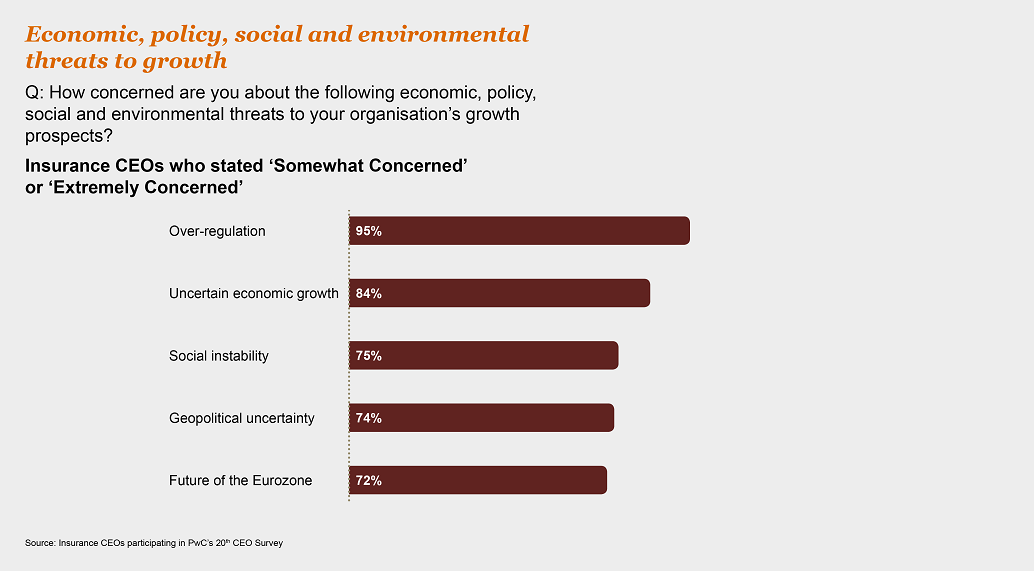 Download the full report here.
Download the full report here.





